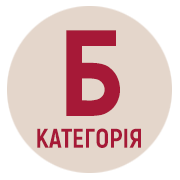THE PROPORTION VALUES OF SPACE AND TIME IN SEMANTIC STRUCTURE OF MODERN ENGLISH ADJECTIVES
DOI:
https://doi.org/10.32782/2410-0927-2020-12-15Keywords:
space, time, spatiality, temporality, lexical-semantic field, microfield, seme, polysemyAbstract
The article analyzes the spatial and temporal orientations of adjectives of modern English. Although many works have been devoted to the study of units with temporal and spatial semantics, including the study of lexical units of the English language field in the system of language features and recorded attempts by linguists to characterize all language features with spatial semantics, the problem remains valid and open for research. The purpose of this article is to establish the quantitative ratio of space and time in linguistic expression, namely the spacious-temporal aspect in the lexical-semantic system on the material of adjectives of modern English, which is the novelty of the study. To achieve this goal it is necessary to establish the point of intersection of lexical and semantic fields of space and time in the semantic structure of modern English adjectives, to distinguish adjectives that intersect the seme of spaciousness and temporality, to investigate the interaction of space and time in quantitative terms. The main concept in the analysis and description of semantics was the assertion of the system of words of the language, which was embodied in the method of studying the lexical-semantic field. The field principle is primarily based on the allocation of the kernel and periphery of the studied language units. It is through the peripheral zone that the connection of different fields, which intersect and enter into each other, can be established, which gives the lexical-semantic system of language not only a strong internal integrity, but also mobility and flexibility. 113 spatial adjectives and 117 temporal adjectives have been analyzed, which are presented as a certain result of human cognitive activity, which distinguishes in his mind ideas not only about the categories of space and time of the real world, but also about their features. It has found that 26 adjectives are characterized by both the seme of space and time. 18 adjectives form the kernel and carry the maximum functional activity.
References
Balli, Sharl. 1961. Frantsuzskaya stilistika. Moskwa.
Vilyuman, Vitold. 1980. Angliyskaya sinonimiya: vvedeniye v teoriyu sinonimiki i metodiki izucheniya sinonimov. Moskwa.
Vinogradov, Viktor. 1953. “O nekotorykh voprosakh russkoy istoricheskoy leksikologii”. Moskwa. 12(3): 186–188.
Karaulov, Yuriy. 1976. Obshchaya i russkaya ideografiya. Moskwa: Nauka.
Kuznetsova, Era. 1979. “O printsipakh i metodakh vydeleniya obyema semanticheskikh klassov russkikh glagolov”. Klassy slov i ikh vzaimodeystviye. Sverdlovsk.
Kuznetsov, Aleksandr. 1980. Strukturno-semanticheskiye parametry v leksike (na materiale angliyskogo yazyka). Moskwa.
Polevyye struktury v sisteme yazyka. 1989. Voronezh.
Sokolovskaya, Zhanna. 1990. Problemy opisaniya leksicheskoi semantiki. Kyiv: Naukova dumka.
Sternin, Iosif. 1985. Leksicheskoye znacheniye slova. Voronezh.
Tolstoy, Nikita. 1968. “Nekotoryye problemy sravnitelnoi slavyanskoi semantiki”. Slavyanskoye yazykoznaniye. Moskwa, 50–56.
Shvedova, Natalia. 1995. “Glagoly kak dominanta v sisteme russkoi leksiki”. Filologicheskiy sbornik. Moskwa, 405–414.
Shcherba, Lev. 1974. Yazykovaya sistema i rechevaya deyatelnost. Moskwa: Nauka.







